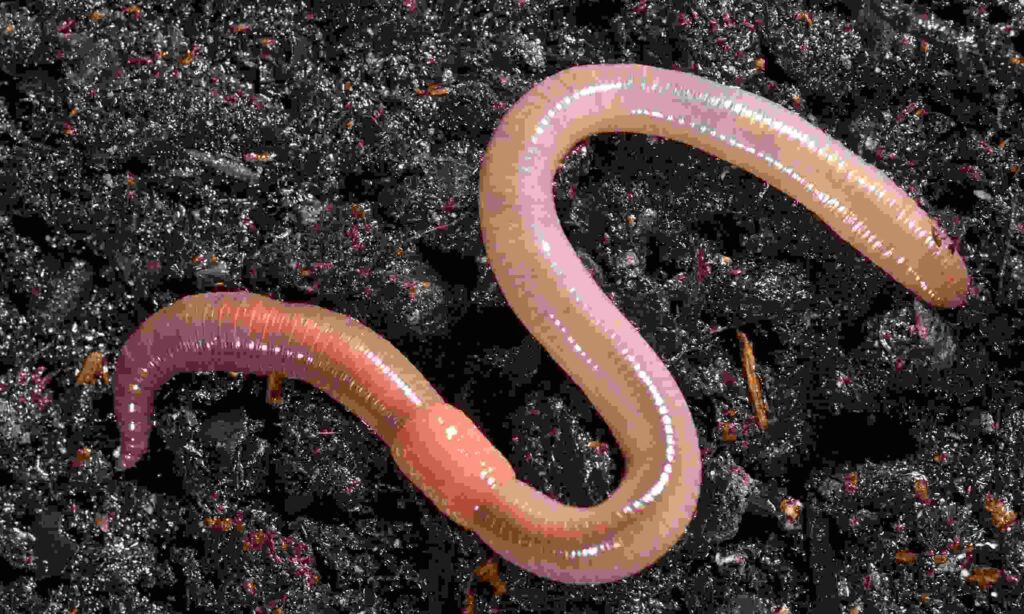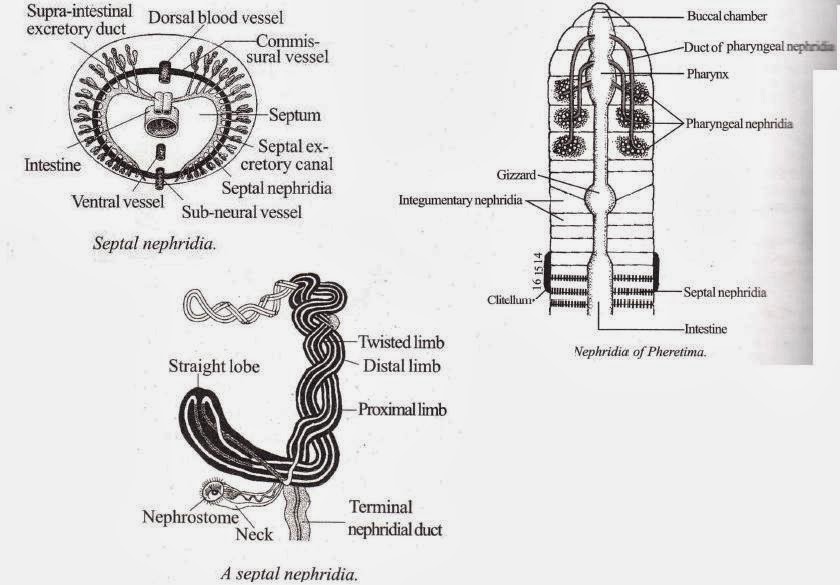Introduction
Earthworms are fascinating creatures that play an essential role in soil health and agriculture. Like all living organisms, earthworms need a way to remove waste from their bodies to maintain homeostasis and survive. The system responsible for this in earthworms is known as the excretory system or more specifically, the nephridial system. This system helps get rid of nitrogenous waste, maintains water balance, and keeps the internal environment of the worm clean and stable.

Table of Contents
What is Excretion?
Excretion is the process of removing metabolic waste from the body. In earthworms, the waste products include nitrogenous substances like ammonia and urea, which are produced during the breakdown of proteins.
Earthworms do not have kidneys like humans. Instead, they use structures called nephridia, which serve a similar function of filtering waste from body fluids and excreting it outside.
Overview of the Nephridial System

The nephridial system in earthworms consists of many nephridia distributed throughout the body. These nephridia are tiny, tubular structures that act like simple kidneys. Each segment of the earthworm (except the first three and the last) contains nephridia.
Functions of the Nephridial System:
- Removal of nitrogenous waste.
- Regulation of water and salt balance (osmoregulation).
- Helps maintain internal chemical balance.
Types of Nephridia in Earthworm
Earthworms possess three main types of nephridia based on their position and function:
1. Septal Nephridia
- Located on both sides of the septa (walls between body segments).
- Found from segment 15 to the last segment.
- Open into the intestine.
- Help in excreting waste into the gut (called enteronephric excretion).
- Large and most numerous type.
2. Integumentary Nephridia
- Found attached to the inner surface of the body wall.
- Present from segment 7 to the last segment.
- Open directly to the outside through tiny pores.
- Involved in excreting waste directly out of the body (exonephric excretion).
- Important for regulating body fluids.
3. Pharyngeal Nephridia
- Found in groups around the pharynx (segments 4, 5, and 6).
- Ducts open into the buccal cavity (mouth region).
- Also involved in waste removal and help purify fluids near the head.
Structure of a Nephridium
A typical nephridium is a long, coiled, tubular structure with the following parts:
1. Nephrostome
- A funnel-shaped opening that collects waste from the body cavity (coelom).
2. Tubule
- Long and coiled tube where reabsorption of useful substances like water and salts happens.
- Waste materials remain and move forward.
3. Nephridiopore
- The external opening through which the waste is expelled from the body.
Each nephridium is richly supplied with capillaries, allowing efficient exchange and filtering of fluids.
Working of the Nephridial System
The process of excretion in earthworms using nephridia involves the following steps:
- Collection – The nephrostome collects coelomic fluid that contains both waste and useful substances.
- Filtration and Reabsorption – The fluid passes through the tubules where water and salts are reabsorbed into the body.
- Waste Formation – Remaining waste material is converted into urine-like fluid.
- Excretion – The fluid is released either into the gut (in the case of septal nephridia) or outside the body (through nephridiopores of integumentary nephridia).
Enteronephric vs Exonephric Nephridia
Earthworms have both enteronephric and exonephric modes of excretion:
- Enteronephric nephridia (like septal nephridia) discharge waste into the intestine. This waste is eventually expelled along with digestive waste.
- Exonephric nephridia (like integumentary and pharyngeal nephridia) discharge waste directly to the outside environment.
This dual mode helps earthworms conserve water in dry environments (by enteronephric excretion) and quickly eliminate waste in moist conditions (by exonephric excretion).
Osmoregulation by Nephridia
Besides removing waste, nephridia help in maintaining water balance. Earthworms live in moist environments where controlling water content is critical.
- When there is too much water, nephridia help remove the excess.
- In dry conditions, nephridia reabsorb more water to prevent dehydration.
This function is vital for the survival of earthworms, which breathe through their moist skin and must avoid drying out.
Number and Distribution of Nephridia
- Pharyngeal nephridia: In three pairs (segments 4, 5, 6)
- Septal nephridia: Around 80-100 in each segment from 15 to the last
- Integumentary nephridia: Scattered in the body wall from segment 7 onwards
Thus, earthworms have thousands of nephridia working continuously to maintain internal balance.
Importance of the Nephridial System
The nephridial system is essential for the following reasons:
- Maintains cleanliness inside the body.
- Prevents toxic buildup of nitrogenous wastes.
- Balances water and salts, which is crucial for a soil-living animal.
- Helps the worm adapt to different moisture levels in the soil.
- Allows earthworms to live underground without poisoning themselves.
Comparative Note: Earthworm vs Higher Animals
While humans and higher animals have kidneys for excretion, earthworms use nephridia. Though simpler, the function is quite similar:
- Both filter body fluids.
- Both reabsorb useful substances.
- Both release waste as urine-like fluid.
This shows how different organisms have evolved ways to solve similar biological problems.
Diseases and Malfunctions (Rare in Wild)
Although not much is known about excretory diseases in earthworms due to their simple biology, any blockage or failure in the nephridial system would result in toxin buildup and death. Studies on worms in polluted soils show stress-related damage to their excretory tissues.
Scientific Importance
Studying the excretory system of earthworms helps scientists understand primitive excretory mechanisms. Earthworms are also used in ecotoxicology studies to measure soil pollution.
Conclusion
The excretory or nephridial system of earthworms is a beautifully simple and efficient design. By using thousands of nephridia scattered throughout the body, earthworms are able to manage waste and maintain their internal balance in a wide range of environments. These tiny filters not only ensure survival but also support the worm’s role in enriching the soil and promoting healthy ecosystems.
Three Key Summary
- Nephridia are the excretory organs of earthworms, similar to kidneys in function.
- There are three types: septal, integumentary, and pharyngeal, each serving unique roles.
- The nephridial system helps remove waste, conserve water, and maintain chemical balance.
FREQUENTLY ASKED QUESTIONS
What is the excretory system of earthworm called?
It is called the nephridial system, made up of tiny tubular units called nephridia.
How many types of nephridia are there in earthworms?
There are three types: septal, integumentary, and pharyngeal.
Do earthworms have kidneys?
No. Instead of kidneys, earthworms use nephridia to filter and remove waste.
Related Articles




